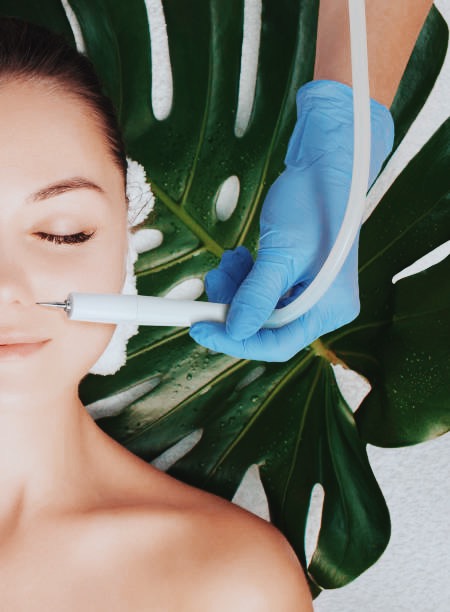
- May 3, 2022
May 3, 2022 / SKINCARE
How To Fade Hyperpigmentation

You are no stranger to hyperpigmentation or “dark spots” if you are a medium to deeper skin tone. Unfortunately, they are often hard to avoid. More importantly, it’s better to understand how it happens and how you can prevent it.
What Is Hyperpigmentation?
Hyperpigmentation is an overproduction of pigment in the skin. It can be a single dark mark or several. It is most common in those with medium to deeper skin tones.
How Can You Get Hyperpigmentation?
Good question!! Hyperpigmentation occurs when there is trauma or irritation to the skin. For example, dark spots can occur after an acne breakout, abusing skincare acids/ abrasive scrubs, or worshiping the sun. Then, melanocytes, the cells that produce pigment, go to town and bring dark marks to the surface.
How Do I Fade My Dark Spots?
Do note that hyperpigmentation can take a while to fade. However, there are a few solid ingredients on the skincare market to help fade these pesky spots.
First and foremost, SPF 30 or higher EVERY DAMN DAY. Keep your dark spots out of the sun by wearing wide-brim hats or hanging out under an umbrella. UV rays will drive that pigment even more and make it very hard to lighten.
Along with UV radiation, there’s visible light, the light you can see with your eyes. This is called blue light, and this can make hyperpigmentation very persistent. In addition, it penetrates through window glass, so make sure you wear SPF indoors and reapply.
Active Ingredients For Fading Hyperpigmentation
I feel like everyone thinks they need a Vitamin C serum in their skincare routine (you don’t). However, Vitamin C is popular and can help fade hyperpigmentation. The biggest downfall to Vitamin C, specifically L-ascorbic Acid, which has the most data, is that it is hard to get into the skin and is very unstable.
It can be very irritating for some and needs to be formulated with antioxidants ferulic acid and vitamin e. Many Vitamin C products on the market seem promising but aren’t. The only one I feel comfortable recommending is C E Ferulic By Skin Ceuticals. Its patent formula is superior to all others on the market for actually penetrating into the skin.
Next up is Koji Acid. This antioxidant is derived from fermented foods such as soy and sake. It can help lighten hyperpigmentation and is slightly anti-inflammatory. It can be irritating to some but, overall, well-tolerated. You won’t see instant results with Kojic Acid, so be patient and consistent. I would try this once at night and see if you tolerate it. If so, it can be applied twice a day.
Topical Vitamin A, I’m talking prescription retinoids or over-the-counter vitamin a derivatives Adapalene (Differin) and retinol. All of these can pump the brakes on pigment production. In addition, they help increase cell turnover, which clears pigment over time and prevents it from forming. If you suffer from acne, this is an excellent option for you.
But, to be honest, if you’re not using some form of Vitamin A at night in your skincare routine, I don’t know what you’re doing.
In-Office Treatments For Hyperpigmentation
Seeking out a board-certified dermatologist to help with hyperpigmentation is an excellent place to start. Depending on the severity of your concern, they might offer you topical prescriptions like hydroquinone or tranexamic acid, which are fantastic for hyperpigmentation. Or instead, they might suggest a laser treatment such as Fraxel or a chemical peel. Again, they are fabulous for treating hyperpigmentation, and you can achieve quicker results with little downtime.
With Love,
Nicole
